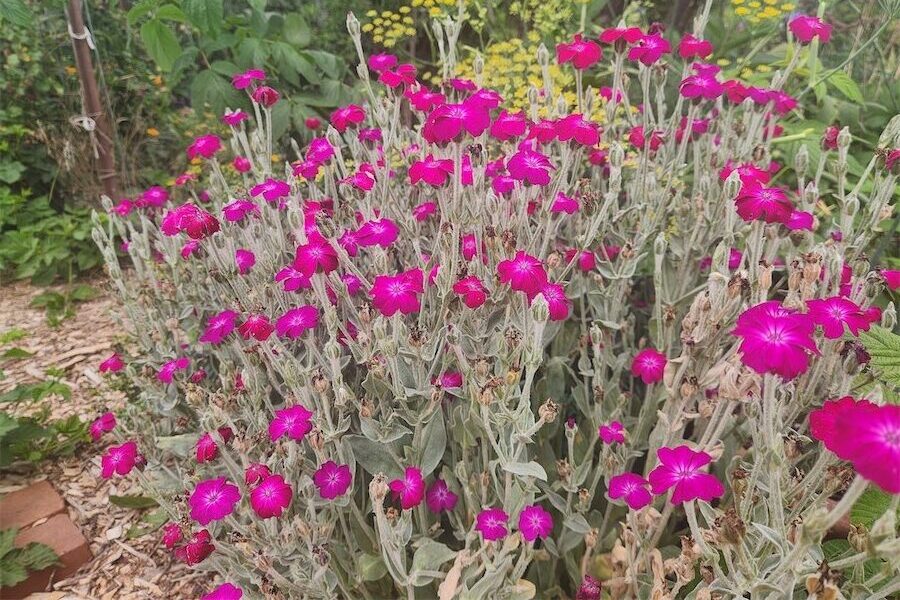While there are many plants we can grow that use less or little water, drought-tolerant plants also need to survive our cold winters, writes garden columnist JACKIE WARBURTON.
Drought-tolerant plants can be grey, short-leaved plants that have deep-rooted systems and succulent leaves, but importantly plants that photosynthesise a certain way with water conservation in mind.

Flowering now is an old-fashioned plant I have replanted this year called Rose Campion (Lychnis coronaria).
The foliage is grey and its upright stems stand tall with magnificent magenta flowers and is a terrific border plant, growing 50-centimetres tall.
They do self-seed, but are not invasive and, when young, can be transplanted to areas where there is good drainage.
This plant is disease free, low maintenance and flowers right through summer. There are white and pink flowering varieties and they all can be treated the same way. Dead head them to keep compact or left for the flowers to set seed and self-propagate.
They prefer division in spring and get them growing strong before the summer heat comes along.

ALONGSIDE the Lychnis, try buddleias (or butterfly bush) to attract butterflies and bees.
Buddleias are perfect for our climate and there is a large variety to choose from. Their sizes range from dwarf to small tree.
My favourite is Black Knight (Buddleia davidii) as its flowers are a dark, unusual colour that contrasts well with other shrubs.
Most buddleias do not have any special pruning requirements other than they won’t die if you give them a good hack. They are fast-growing, evergreen plants, great for under powerlines and providing good screening. Choose the right-size plant for the right-size spot and that will decrease the maintenance in the future.
FEBRUARY is perfect for sowing vegetables for winter harvest. Winter vegetables take the longest to grow and can be the most expensive to buy at the supermarket, but once you’ve eaten your own produce, you’ll be sowing seeds every year!
The most successful winter vegetable seeds to grow in our climate are carrots, celery, parsnips, swedes and turnips.
All but celery are root vegetables, and they don’t like a rich soil, preferring to be planted after top-ground growers such as greens and floater plants such as zucchini or corn.
While planting seed where it is to grow is best, winter vegetables can be started in punnets.
Seed-rising mix can be made at home by sifting potting mix and the fines can be used with a little core peat to hold the moisture and top up punnets with a little sharp river sand to help reduce fungal issues and drainage for seedlings to grow fast.
Keep them moist and lay shadecloth over the soil if needed, until germination and then gradually increase the sunlight to the new seedlings.
Once there are four sets of leaves on the seedlings, they can get a little, light liquid feed to get them growing strong. Pull out weak seedings that will stop others growing well. The more room root vegetables have to grow, the better the overall yield.
Jottings…
- Keep winter seedlings moist and plant out in succession.
- Deadhead summer bulbs and fertilise.
- Do not compost diseased or insect eaten fruit, place in the green bin.
- Prune branches off citrus if needed to shape and fertilise.
Who can be trusted?
In a world of spin and confusion, there’s never been a more important time to support independent journalism in Canberra.
If you trust our work online and want to enforce the power of independent voices, I invite you to make a small contribution.
Every dollar of support is invested back into our journalism to help keep citynews.com.au strong and free.
Thank you,
Ian Meikle, editor





